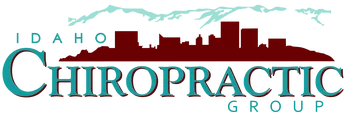- posted: Jun. 11, 2018
January 3, 2012, 11:00 am
For Neck Pain,Chiropractic and Exercise Are Better Than Drugs
By ANAHAD O'CONNORTony Cenicola/The New York TimesWhat'sthe best treatment for neck pain?
Seeing a chiropractor or engaging in light exercise relieves neck pain moreeffectively than relying on pain medication, new research shows.
The new study is one of the few head-to-head comparisons of varioustreatments for neck pain, a problem that affects three quarters of Americans atsome point in their lives but has no proven, first-line treatment. While manypeople seek out spinal manipulation by chiropractors, the evidence supportingits usefulness has been limited at best.
But the new research, published in TheAnnals of Internal Medicine, found that chiropractic care or simple exercisesdone at home were better at reducing pain than taking medications likeaspirin, ibuprofen or narcotics.
"These changes were diminished over time, but they were still present," saidDr. Gert Bronfort, an author of the study and research professor atNorthwestern Health Sciences University in Minnesota. "Even a year later, therewere differences between the spinal manipulation and medication groups."
Moderate and acute neck pain is one of the most frequent reasons for tripsto primary care doctors, prompting millions of visits every year. For patients,it can be a difficult problem to navigate. In some cases the pain and stiffnesscrop up without explanation, and treatment options are varied. Physicaltherapy, pain medication and spinal manipulation are popular options, but Dr.Bronfort was inspired to carry out an analysis because so little researchexists.
"There was a void in the scientific literature in terms of what the mosthelpful treatments are," he said.
To find out, Dr. Bronfort and his colleagues recruited a large group ofadults with neck pain that had no known specific cause. The subjects, 272 inall, were mostly recruited from a large HMO and through advertisements. Theresearchers then split them into three groups and followed them for about threemonths.
One group was assigned to visit a chiropractor for roughly 20-minutesessions throughout the course of the study, making an average of 15 visits. Asecond group was assigned to take common pain relievers like acetaminophen and- in some cases, at the discretion of a doctor - stronger drugs like narcoticsand muscle relaxants. The third group met on two occasions with physicaltherapists who gave them instructions on simple, gentle exercises for the neckthat they could do at home. They were encouraged to do 5 to 10 repetitions ofeach exercise up to eight times a day. (A demonstration of the exercises can befound at www.annals.org).
After 12 weeks, the people in the non-medication groups did significantlybetter than those taking the drugs. About 57 percent of those who met withchiropractors and 48 percent who did the exercises reported at least a 75percent reduction in pain, compared to 33 percent of the people in themedication group.
A year later, when the researchers checked back in, 53 percent of the subjectswho had received spinal manipulation still reported at least a 75 percentreduction in pain, similar to the exercise group. That compared to just a 38percent pain reduction among those who had been taking medication.
Dr. Bronfort said it was a "big surprise" to see that the home exerciseswere about as effective as the chiropractic sessions. "We hadn't expected thatthey would be that close," he said. "But I guess that's good news forpatients."
In addition to their limited pain relief, the medications had at least oneother downside: people kept taking them. "The people in the medication groupkept on using a higher amount of medication more frequently throughout thefollow-up period, up to a year later," Dr. Bronfort said. "If you're taking medicationover a long time, then we're running into more systemic side effects likegastrointestinal problems."
He also expressed concern that those on medications were not as empowered oractive in their own care as those in the other groups. "We think it's importantthat patients are enabled to deal with as much control over their own conditionas possible," he said. "This study shows that they can play a large role intheir own care."
Dr. Corey Matthews
Idaho Chiropractic Group
403 S. 11th #110
Boise, Idaho 83702
343-6900 Fax: 343-0642
Email: [email protected]
Website: www.idahochiropracticgroup.com
Office Hours
9:00 am - 5:30 pm
7:00 am - 1:00 pm
8:00 am - 2:00 pm
9:00 am - 5:30 pm
7:00 am - 1:00 pm
9:00 am - 11:00 am
Closed



